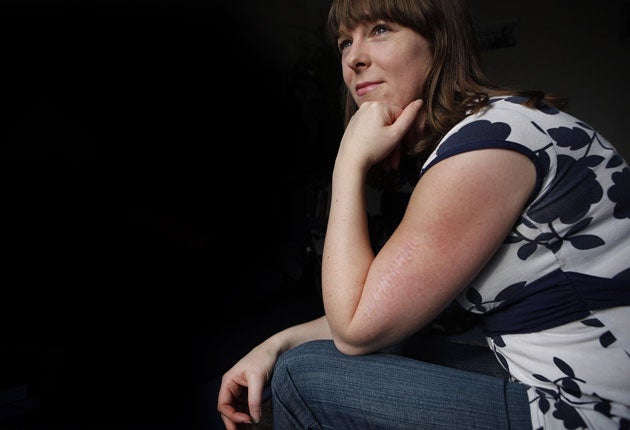Blood and guts: On the brink of a revolution
Scientists will soon be able to manufacture body tissue to order if clinical trials continue to yield promising results

The future of British medical science looks bright, brilliant and very, very bold. Scientists have taken giant steps towards being able to manufacture new skin, blood and even new bones.
Some of the UK's top scientists will gather this week to share news of groundbreaking developments that will radically improve the chances of patients suffering from failing joints, damaged eyes, broken bones or scarred skin. The breakthroughs they have made will eventually ease the pressure to recruit, for example, blood donors of a particular type. Within a decade, blood cells made in the laboratory could be available for transfusions.
Professor Sue Hill, the Government's Chief Scientific Officer, said yesterday that Britain's ageing population is increasing the pressure on scientists to develop innovative, cheap and better techniques to repair ageing and worn-out bodies. Some of the pioneering work to do this will be presented at a Department of Health conference on Tuesday. "We have examples of world-leading scientific research in regenerative medicine," she said. "These scientists should be shouting from the rooftops about their work, which is recognised as internationally important. The conference is an opportunity to bring together scientists from 51 disciplines with those working in patient services, and policy-makers, so we can improve patient services and work out how to better engage with the public, so they understand the contribution science makes to their health and to UK PLC."
Researchers in London have pioneered a cutting-edge, yet simple, technique that will enable doctors to make customised human tissue, such as corneas, skin, nerve implants and cartilage, within minutes for patients.
Professor Robert Brown, head of the Centre for Tissue Repair and Engineering at University College London, and his colleagues have developed a process that manufactures human tissue by squeezing out the water from collagen – the protein which makes up 25 per cent of our body weight. Skin, bone, cartilage and ligaments are all made up of layers of collagen or connective tissue. However, this can wear out as we get older; it can also be damaged by sporting injuries or accidents. The ability to develop made-to-measure layers of tissue or "spare parts" for a particular person will revolutionise reconstructive surgery as it could simplify imperfect, expensive and invasive operations such as corneal transplants, skin grafts and total knee replacements.
The ability to generate all kinds of human tissue, including diseased tissue such as tumours, would be used to test new drugs and eradicate the need for many of the animal experiments employed in early drug trials.
Scientists at UCL have already made skin- and ligament-equivalent tissue using a prototype machine, but a machine for widespread use in operating theatres is being developed by the Automation Partnership, based in Cambridge. This will be ready in six months and available for clinical trials within a year, according to the company's chief executive, David Newble.
Doctors in operating theatres will eventually be able to programme the "tissue machine" – which will be small enough to sit on a workbench – to produce "spare parts" within minutes. Perfectly designed skin will become a reality, whereas at the moment a less than ideal cosmetic skin match is painfully removed from one area of the patient's body, such as the thigh, and grafted on to a completely different area, such as an eyelid. In other cases, skin substitutes are grown in laboratories over many days or weeks before they can be used.
In Bristol, laboratory-produced red blood cells suitable for emergency blood transfusions could be available within a decade, according to Professor David Anstee at the NHS Blood and Transplant service. Efforts are being directed towards increasing the speed with which red blood cells can be produced using stem cells from umbilical cord blood, rather than from adult blood.
Manufacturing O negative blood would alleviate the pressure on the blood donation system since this blood type can be tolerated by everyone in the short term, yet only 12 per cent of the population are potential donors. This is the type carried by the military to treat injured soldiers. Manufactured blood could eventually be used in transfusions instead of donated blood where there is a risk this might be infected or diseased.
Pioneering work by a Manchester-based biopharmaceutical company, Renovo Ltd, could mean the end of unsightly and disfiguring scars left by operations, accidents and burns.
Promising clinical trials using a naturally occurring protein called TGF beta3 have found a huge cosmetic improvement for people undergoing operations such as the removal of varicose veins, which can leave ugly scars. Clinical trials on 1,500 patients have found a 50 per cent improvement in the colour, texture and general appearance of the wound after several months if two injections of the protein are given on the edge of the stitched incision in the hours after surgery.
But while scars can be unsightly, they can also restrict movement and growth if they form across limbs and joints. And internal scars can lead to serious medical complications; for example, a scar in a woman's fallopian tubes can lead to infertility. Trials to test the safety and effectiveness of the protein for internal use will follow, according to Professor Mark Ferguson, an academic entrepreneur and founder of Renovo.
Join our commenting forum
Join thought-provoking conversations, follow other Independent readers and see their replies
Comments